I am including an account of a nature
photographic trip to Darwin and Kakadu in this blog-site as it is a popular area
for Malaysians to visit.
Nature Photography
around Darwin and Kakadu
The first thing you need to consider when
visiting the northern part of the Northern Territories is that there are two
distinct seasons…the dry season and the wet season with periods in between. The
period from the end of the dry season to the wet season is called ‘the build-up’.
The wet season spans the period of November to April characterized by increased
humidity and followed by monsoonal rains and storms Temperatures range from
25-33 degrees C and humidity can be as high as 80%. The dry season from May to
October is characterized by warm sunny days, temperatures from 21 to 32 degrees
C and humidity levels of 60-65%
Three of us, Nick, Colin and I were in the territory
between the end of October to the first week in November………essentially in the ‘build-up’.
The advantages of this time are that there are far less tourists around but you
take your chances with the rain. The chart below sums up the monthly rainfall
and temperatures.
It is best to do photography early and late in the day. It gets very hot in between and can be unproductive and uncomfortable. So get busy early and chill out around the middle of the day. or do yiour driving then in air-conditioned comfort.
We were diverse in our targets from birds to
reptiles. We could not obtain the services of professional guides but gleaned
useful information from the excellent website of Laurie Ross http://laurieross.com.au/tag/darwin/. We had periods of time in Darwin, Jabiru, Katherine and Batchelor based on
Laurie’s written recommendations. We did not stay at Pine Creek but it looked to be more productive than Katherine.
Click on Maps to enlarge
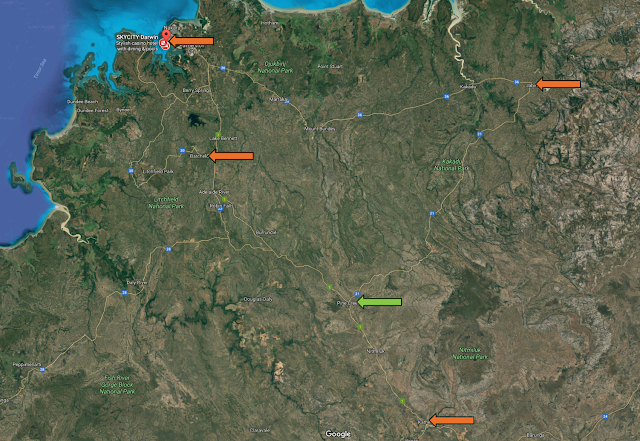
We stayed at the Value Inn in central Darwin.
The accommodation is well located and the compact rooms are comfortable. There
is a bit of a scrum for parking and some of the staff could . do with lessons in customer
relations. the postage stamp-sized swimming was unusable with inebriated folk spending most of their time there. From there we investigated the Esplanade, Charles Darwin National Park,
East Point Monsoon Forest Walk, Howard Springs Nature Reserve and Fogg Dam
Conservation Reserve. Of these Howard Springs was somewhat productive but the
best location of the whole trip was Fogg Dam…..I visited there 4 mornings.
(these places are indicated on the map below). Fogg Dam is just under an hours drive from Central Darwin and was developed as part of a failed rice-growing project in the early 1930s. On one visit there we met members of the 'Friends of Fog Dam' and they treated us to a cooked breakfast......such nice people.
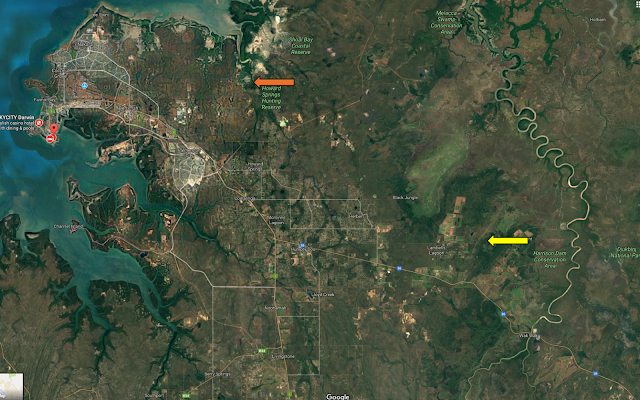
Darwin National Park
This park looked promising but it was hot when we first arrived around 4 pm. Military storage sheds are still in the park as a reminder that Darwin was a target of Japanese bombing in WW2. We did see a mating couple of Forest Kingfishers and a Mistletoe Bird. The latter is quite hard to find and is dependent on mistletoe that is regarded as a pest and destroyed by gardeners.
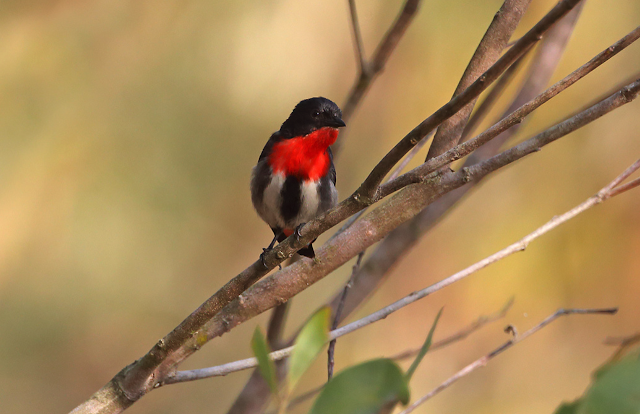 |
| Mistletoe Bird |
Howard Springs
I targeted the Rainbow Pitta at Howard Springs
but instead got some good shots of an amorous Brahminy Kite pair.
 |
| Monitor Lizard |
 |
| Brahminy Kite |
 |
| Brahminy Kites |
Fogg Dam
Fogg Dam was a great place to see many of the 200 bird species recorded there. There are water pythons and crocodiles too. Walking on the dam road is not recommended as crocodiles can decide to rest
there…..but this location is ideally suited to shooting from a vehicle with the
close proximity to wetlands on one side and grasslands on the other. I even
achieved a full frame shot of a tiny forest kingfisher using the car as a mobile hide. There were a number of Magpie Geese flying around. They were the main target of shooters and the shooting season has started a few weeks prior to our visit and gunfire could be heard not far away.
Fogg Dam is rated as one of the top 10 places in Australia for bird-watching.
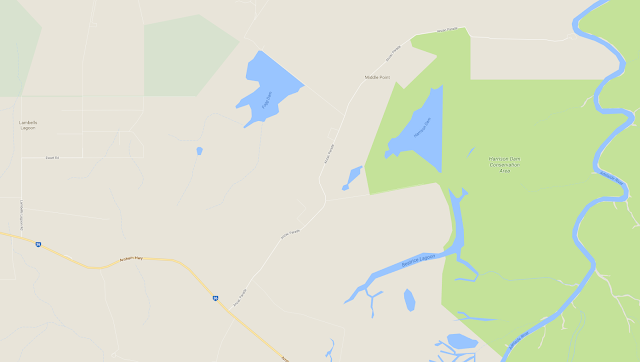 |
| Location of Fogg Dam |
 |
| Full moon before sunrise |
 |
| Sunrise |
 |
| Wetlands at Fogg Dam |
 |
| Comb-Crested Jacana |
 |
| Comb-Crested Jacana |
 |
| Comb-Crested Jacana |
 |
| Observation platform |
 |
| Magpie Geese |
 |
| Comb-Crested Jacana (check out those enormous feet) |
 |
| Brolga |
 |
| Brolga displaying |
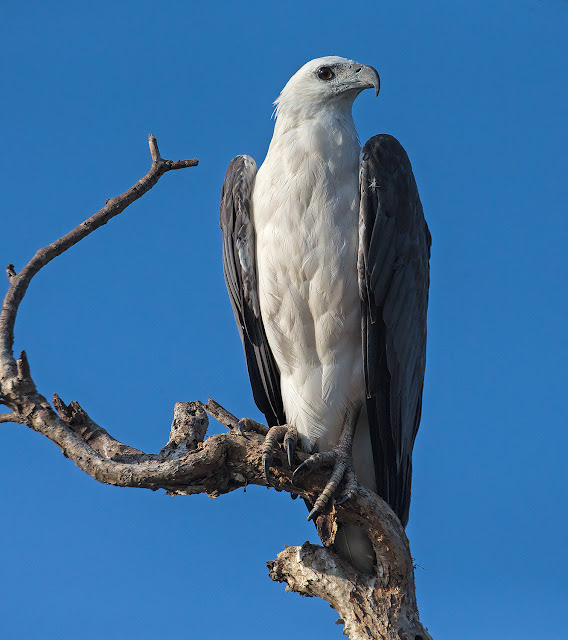 |
| White-bellied Sea Eagle |
 |
| Restless Flycatcher |
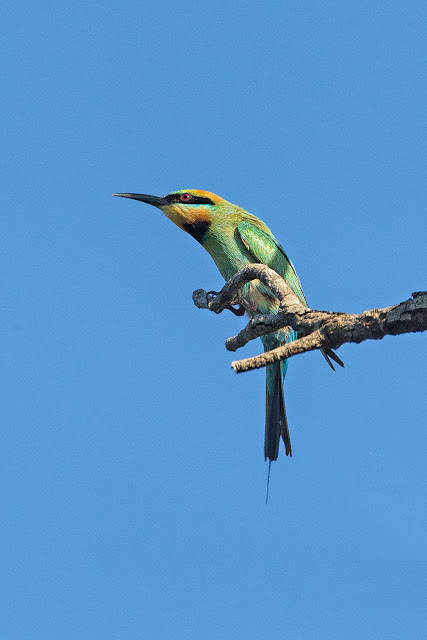 |
| Rainbow Bee-eater |
 |
| Australian Darter |
 |
| Australian Darter fishing |
 |
| Green Pygmy Goose |
 |
| Australasian Grebe |
 |
| Wandering Whistling Ducks |
 |
| Crimson Finch (male) |
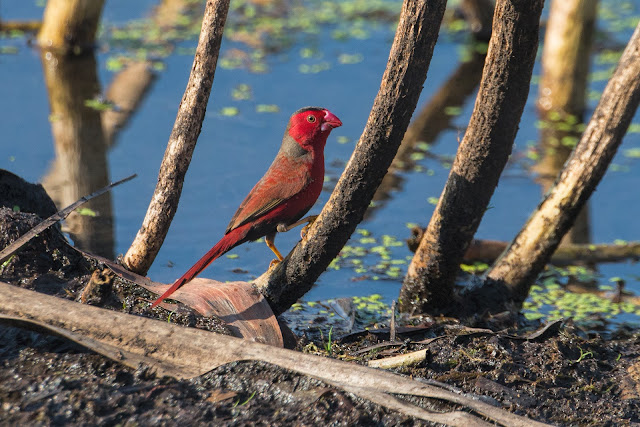 |
| Crimson Finch (male) |
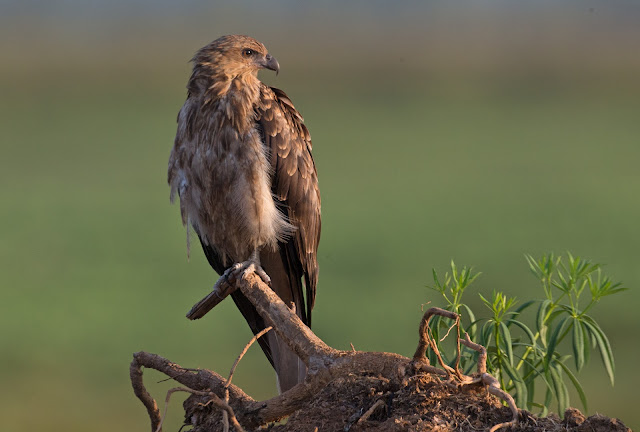 |
| Whistling Kite |
 |
| Black Kite |
 |
| White-bellied Sea Eagle |
 |
| Forest Kingfisher |
 |
| Emerging Lotus flower |
 |
| Intermediate Egret |
 |
| Wandering Whistling Duck |
 |
| Masked Lapwing |
 |
| Northern Water Dragon |
There are warning signs at the entrance to the dam warning folk not to walk on the road on the dam. It looked harmless enough....mostly.....but there was the odd 'lizard' warming itself.
The Kakadu wetlands were our next target. We stayed at the Crocodile Hotel at Jabiru. A comfortable hotel with courteous staff and reasonably good food. The town of Jabiru was developed by Rio Tinto Zinc in the early 1980s to accommodate workers at the newly opened, and controversial, Ranger uranium mine. The mine is in the process of closing and as part of the contract Rio Tinto must return the whole area to its original state by 2021. The tourist industry of the Northern Territories needs a base in the area. There is accommodation at nearby Cooinda.....which would have to be expanded. Several shops, including the popular bakery have already closed down in Jabiru.
Corrobaree Billabong was another recommended place to view wildlife on the way to Jabiru.
There are several boat operators offering cruises and self-drive boats at this location. However they were closing for the wet season and the boat hire hours are not friendly to nature photographers.
 |
| Nick at the boat ramp at Corroboree Billabong |
The Crocodile Hotel where we stayed at Jabiru is in the shape of a crocodile.
On the 240km journey dingoes, Agile Wallabies and the occasional upright-running Frill necked Lizard ran across the road. Whistling and Black Kites are in abundance feeding on roadkill or resting in trees.
 |
| Frill-necked Lizard |
There are a limited number of attractions accessible form Jabiru...a boat trip on Yellow Waters is a must do, there is sunset viewing at Ubirr and Noarlangie as well as Aboriginal Rock Art. Mamukala Billabong is an excellent place to view birds. It is best to visit Mamukala and Yellow waters at dawn. Somewhat surprisingly there is a Thai restaurant near Ubiir that serves very nice food. There is a colony of Flying Foxes across the road the restaurant.
Ubirr
Across the road from the Thai restaurant is a colony of Black Flying Foxes that start to get restless in the late afternoon before flying off at dusk. This species is confined to the northern edge of Australia.
 |
| Black Flying Fox |
 |
| Distribution of the Black Flying Foxes |
 |
| Aboriginal Rock Art |
 |
| Ubirr |
I and read of the spread of Cane Toads into the Northern Territories. Some misguided individuals had introduced cane toads into Queensland in 1935 in the hope of eradicated the cane beetle. The toads were inept at this control but very good a reproducing themselves and have subsequently spread down to New South Wales and threaten areas in Northern Western Australia. Cane toad s are native to South and Mainland Central America. I had not seen much evidence of them until I returned from Ubirr to Jabiru one evening when it was raining and Cane toads were everywhere on the wet road.
 |
| Female Cane Toad |
The map below shows the distribution of cane toads in 2008 and the projected distribution. A cane toad was found in Broome,WA in 2010.
Mamukala
Some 20 minutes drive from Jabiru is a well-positioned bird hide at Mamukala Billabong. A colourful sunrise adds impact to images here.
 |
| Magpie Geese |
 |
| Magpie Geese |
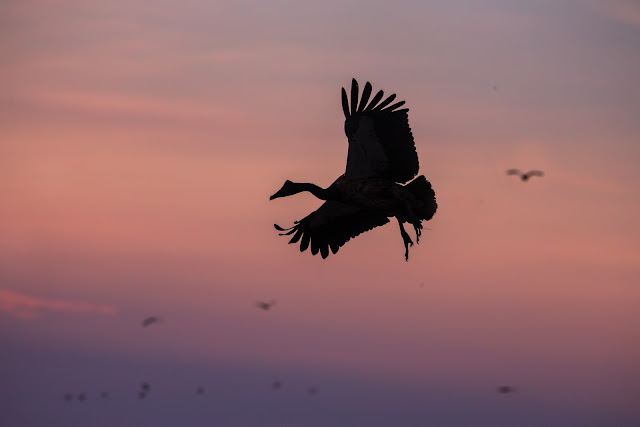 |
| Magpie Goose |
 |
| Mamukala Billabong at dawn |
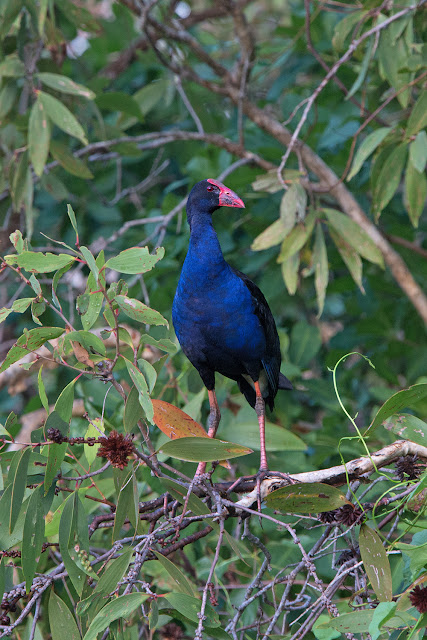 |
| Purple Swamphen |
Yellow Waters
A boat trip on Yellow waters (Cooinda) is essential. The boat driver/guide was excellent in his narrative and in positioning the boat.
 |
| Wandering Whistling Ducks |
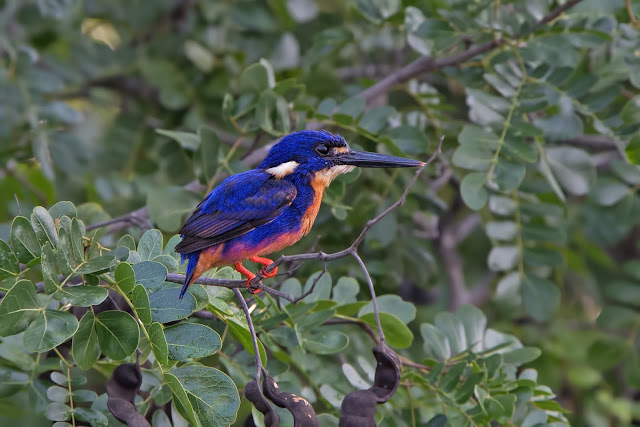 |
| Azure Kingfisher |
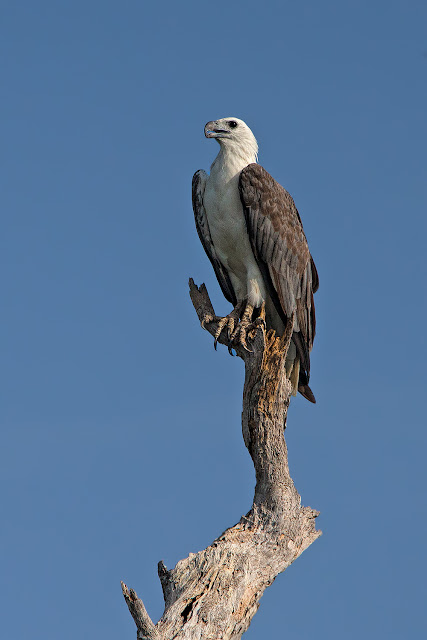 |
| White-bellied Sea Eagle |
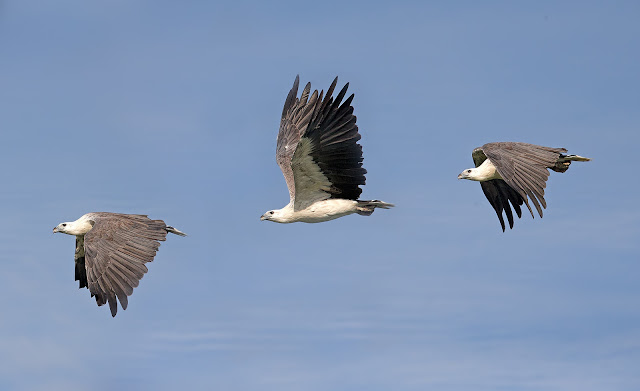 |
| White-bellied Sea Eagle flight (composite) |
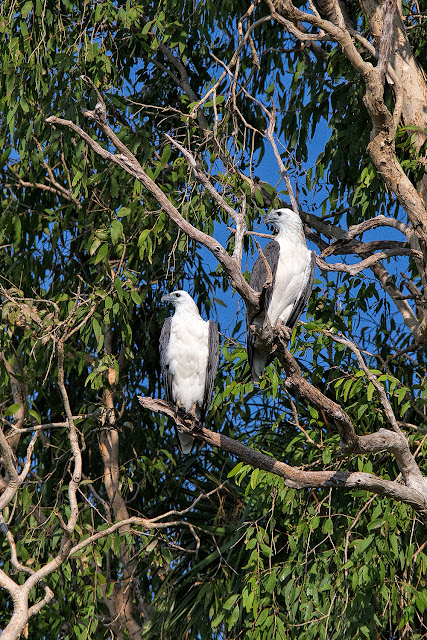 |
| White-bellied Sea Eagle pair |
 |
| Pied Imperial Pigeon |
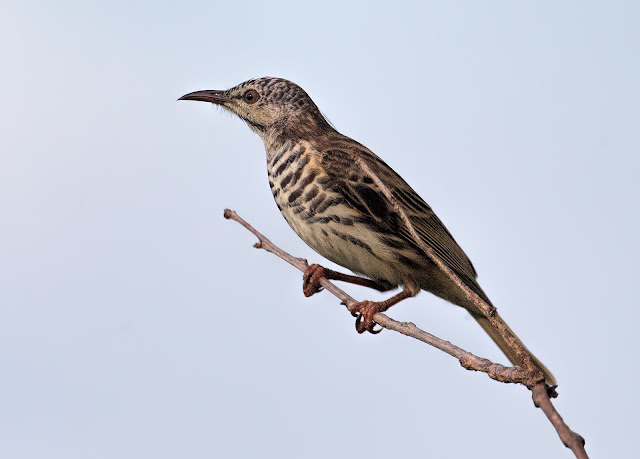 |
| Brush Cuckoo |
 |
| Australian Darter |
 |
| Cattle Egret with a frog |
 |
| Black-necked Stork (Jabiru) |
 |
| Night Heron |
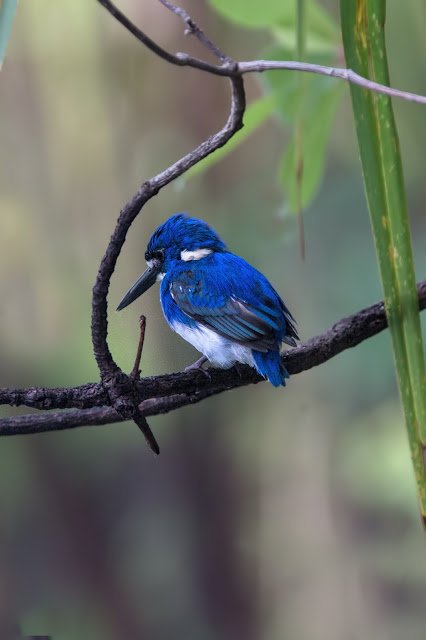 |
| Forest Kingfisher |
 |
| Cattle Egret with his minder |
Katherine and Pine Creek.
We stayed one night at Katherine and explored the Nitmiluk Gorge and Donkey Camp weir without much luck. We found the Pine Creek Township area next day to be much more productive with various parrots feeding on fallen Mango fruit and a Great Bowerbird frequenting his bower.
 |
| Red-winged Parrots |
 |
| Red-winged Parrot (female) |
 |
| Great Bowerbird |
 |
| Hooded Parrot |
 At Pine Creek we also saw the elusive and turbo-charged Hooded Parrot. This species has a very limited distribution as shown.
At Pine Creek we also saw the elusive and turbo-charged Hooded Parrot. This species has a very limited distribution as shown.
Batchelor and Litchfield Park
We stayed 2 nights in comfortable cabins at a camping ground in Batchelor, which is a small, leafy town with a nice friendly pub. The proprietor of the camping ground fed the native birds in the morning and evening but generally the whole area seemed somewhat devoid of our feathered friends.
 |
| Rainbow Lorikeets |
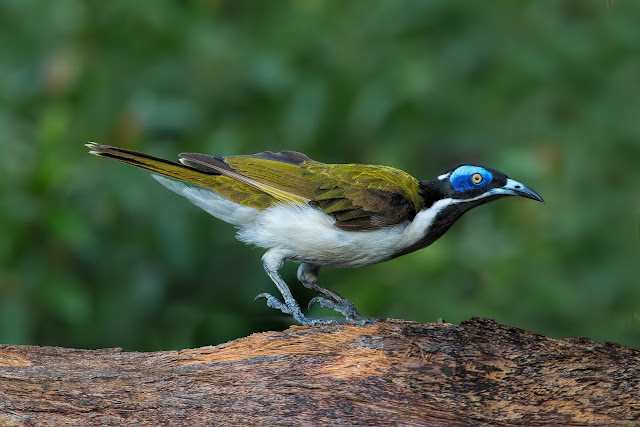 |
| Blue-faced Honeyeater (male) |
 |
| Blue-faced Honeyeater (female) |
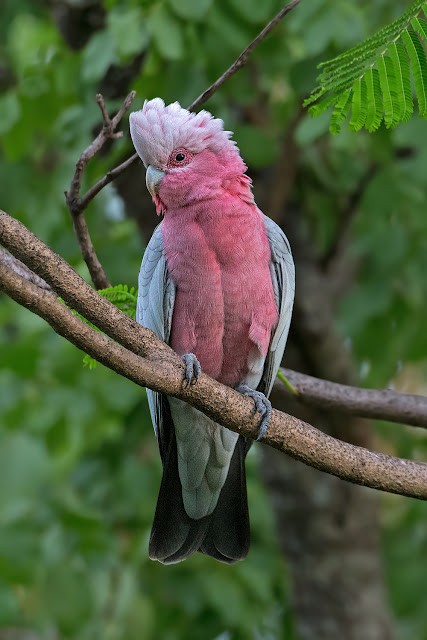 |
| Galah |
Litchfield National Park
The main features of Litchfield National Park are the magnetic termite mounds and several waterfalls.
The magnetic termite mounds are the home of Amitermes meridionalis which is a species of termite endemic to Northern Australia and the common name derives from the fact that the wedge-shaped mound is aligned with its main axis running north and south. A field of these mounds looks like a church graveyard.. The mounds may be 13 ft hight and 8ft wide and 12-20 inches through. Te nests are laterally flattened and are oriented so that they receive the warmth of the sun ion the eastern and western sides respectively in the morning and evening. The interior temperature remains relatively stable with high humidity.
The magnetic termite mounds are laterally thin when seen from a northerly perspective as compared with the conventional mounds




























































 At Pine Creek we also saw the elusive and turbo-charged Hooded Parrot. This species has a very limited distribution as shown.
At Pine Creek we also saw the elusive and turbo-charged Hooded Parrot. This species has a very limited distribution as shown. 








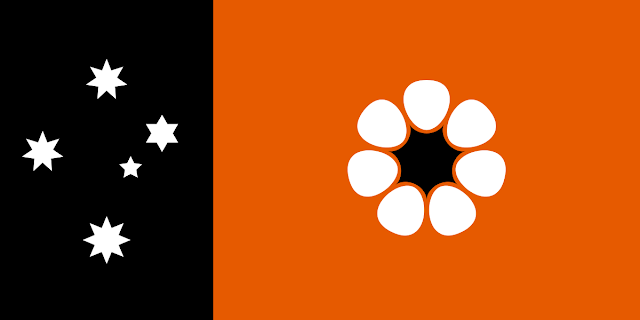



























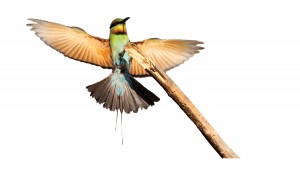
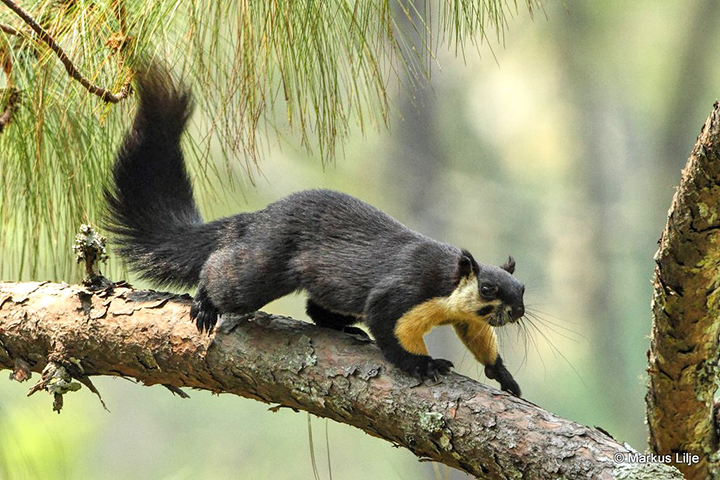
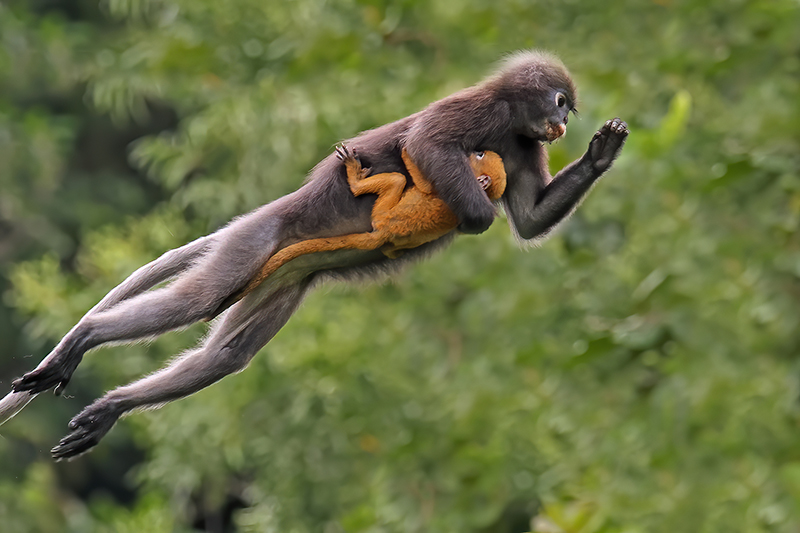

I found this is an informative and interesting post so i think so it is very useful and knowledgeable. I would like to thank you for the efforts you have made in writing this article. Dslr camera price in pakistan
ReplyDelete